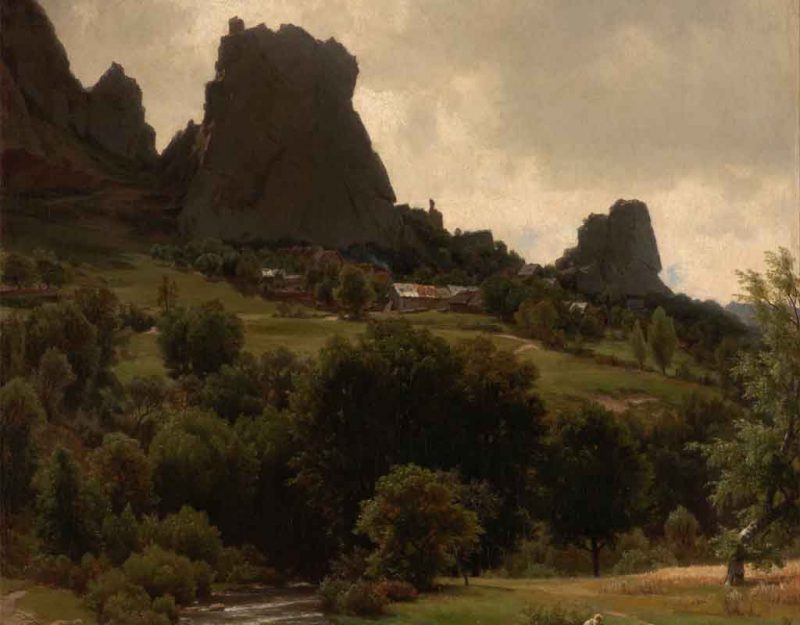On That Heat Island Effect (Not Climate Change)
Two mindsets confront the changes we are seeing in our weather.
One says that global carbon and methane pollution has created an insulating layer around the globe that is trapping heat, therefore altering weather by means never fully explained.
The other says that humanity has done the same thing everywhere it has gone, namely building large flat heat radiators called “cities,” and has packed with them with five billion people to the point where we are generating enough concentrated heat to disrupt jet streams and influence weather.
Every now and then if you read between the lines, you can see that opinion is shifting toward the urban heat island effect instead of the spaced-out climate models:
The intensifying heat is heightened in large urban areas by their design, according to a new report that has attempted to quantify where the “urban heat island” effect is most acute.
Cities are usually hotter than nearby countryside because they generate heat through transportation, machinery and air conditioning that funnels hot air into the streets. A lack of trees, grass and other plants, which help cool the air, is compounded by the prevalence of miles of hard, dark pavement and buildings that soak up heat.
The phenomena of urban heat islands has been known for some time, since UHIs distort climate around them, including anything further down the jet stream:
An urban heat island, or UHI, is a metropolitan area that’s a lot warmer than the rural areas surrounding it. Heat is created by energy from all the people, cars, buses, and trains in big cities like New York, Paris, and London. Urban heat islands are created in areas like these: places that have lots of activity and lots of people.
There are many reasons for UHIs. When houses, shops, and industrial buildings are constructed close together, it can create a UHI. Building materials are usually very good at insulating, or holding in heat. This insulation makes the areas around buildings warmer.
“Waste heat” also contributes to a UHI. People and their tools, such as cars and factories, are always burning off energy, whether they’re jogging, driving, or just living their day-to-day lives. The energy people burn off usually escapes in the form of heat. And if there are a lot of people in one area, that’s a lot of heat.
Urban areas are densely populated, meaning there are a lot of people in a small space. Urban areas are also densely constructed, meaning buildings are constructed very close together. When there is no more room for an urban area to expand, engineers build upward, creating skyscrapers. All this construction means waste heat—and heat that escapes insulation has nowhere to go. It lingers in and between buildings in the UHI.
These UHIs distort nocturnal temperature more than daytime temperature:
A review of research studies and data found that in the United States, the heat island effect results in daytime temperatures in urban areas about 1–7°F higher than temperatures in outlying areas and nighttime temperatures about 2–5°F higher. Humid regions (primarily in the eastern United States) and cities with larger and denser populations experience the greatest temperature differences.
Heat islands displace the jet stream, pausing large masses of water in vapor form over land, where they promptly dump floods:
Meanwhile, a slowdown in the Jet Stream, the high altitude river of air that usually carries the Northern Hemisphere’s weather, held the rain in place—a phenomenon that also contributed to the Pacific Northwest heatwave, and that some scientists link to climate change.
On some level, the forces driving the rain are simple: warm air holds more moisture, which can then fall as rain.
The rising ball of heat from these heat island cities causes jet streams to move away and remove the air currents which hurry storms along before they can saturate cities:
The reason behind this record-smashing heat wave was a hot dome of high pressure that built into the region as the jet stream took a far-north arcing path into western Canada.
Sinking air underneath this high-pressure system has sent high temperatures soaring more than 30 or even 40 degrees above average for this time of year.
The same conditions that make cities into heat islands also make them into runoff generators which bounce water off the surface, allowing it to accumulate until it reaches critical mass, at which point it becomes flash flooding:
As the population increased from rural to highly urbanized peak discharges for the same runoff became as much as ten times greater.
The herd-denialist viewpoint wants to blame global warming because that is easy: we have to splash around a lot of government money, build green energy, drive electric cars, and otherwise keep living as we have been.
The realistic viewpoint on this issue says that our basic approach is wrong. Concrete cities are destructive, and having people commute to get around ghettos just makes the city even more destructive. We need smaller places with fewer criminal and destructive people. That requires actual change.
In the long term, the only workable solution to date is Half-Earth, which by setting aside half of land, air, and sea for nature would force a reduction in human population and re-purposing of former ghettos as functional housing.
Tags: climate change, half earth, heat islands, pollution, runoff










